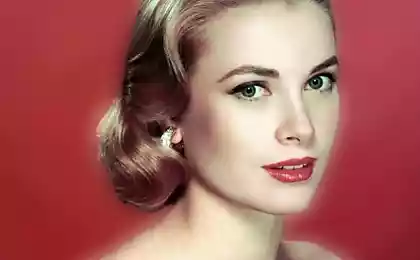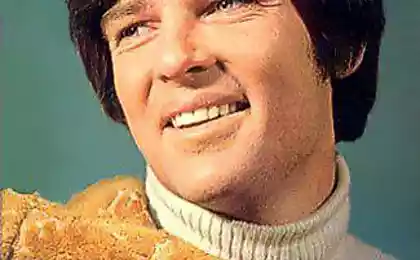643
The great women scientists and their discovery
It is believed that discoveries made by women did not affect the development of mankind and was the exception to the rule. Useful stuff, or that men did not finish, such as a car muffler (El Delores Jones, 1917) or the wipers-the wipers (Mary Anderson, 1903). Housewife Marion Donovan made history, made a waterproof diaper (1917), the French Ermine Kadal, in 1889 patented a bra. Women supposedly invented frozen food (Mary Engel Pennington, 1907), microwave (Jesse Cartwright), machines for snow removal (Cynthia Westover, 1892) and washing dishes (Josephine Cochrane, 1886).
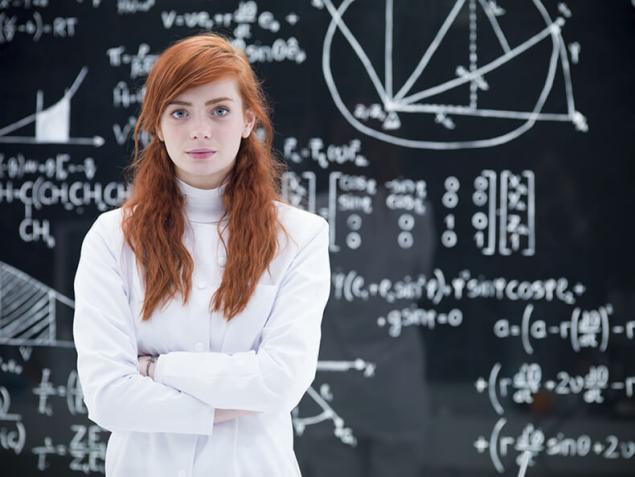
Their know-how ladies appear intelligent minority who thoughtlessly enjoys coffee filters (Melitta Benz, 1909), chocolate chip cookies (Ruth Wakefield, 1930), pink champagne and Nicole Clicquot, while the stern men grind lenses for microscopes, travel through and build colliders.
On the women's account of little fundamental discoveries and scientific insights, and even in this case we have to share the laurels with men. Rosalind Elsie Franklin (1920-1957), who discovered the DNA double helix, shared the Nobel prize with three male colleagues, with no formal recognition.
Physicist Maria Mayer (1906 – 1972), all done on modeling the atomic nucleus, "treated" the Nobel prize two associates. And yet, in some cases, a woman's intuition, creativity and the ability to work hard has produced something more than a hat or a salad.
Hypatia Of Alexandria (355-415)
"To retain their right to think for even to think wrongly is better than not to think at all"

Hypatia, the daughter of the mathematician Theon of Alexandria, is the world's first female astronomer, philosopher and mathematician. According to contemporaries, surpassed in mathematics by his father, introduced the terms hyperbola, parabola and ellipse. In philosophy she was not equal. At 16, she founded the school of Neoplatonism.
He taught at the Alexandria school of philosophy of Plato and Aristotle, mathematics, dealt with the calculation of astronomical tables. It is believed that Hypatia invented or perfected distiller, a device for measuring the density of water hydrometer, the astrolabe, the planisphere and hydrostop – flat mobile sky map. The primacy of the invention of the astrolabe (instrument for astronomical measurements, which is called the computer) is disputed.
At least, Hypatia with his father modified astrolabe Claudius Ptolemy, preserved her letters with the description of the device. Hypatia is the only woman depicted in the famous fresco by Raphael "the school of Athens", surrounded by great scientists and philosophers.
The article Ari Allenby An Astronomical Murder?, published in 2010 in the journal Astronomy and Geophysics, the version of political murder of the pagan Hypatia. In those days, the Alexandrian and the Roman Church set the date of Easter according to different calendars. Easter had to fall on the first Sunday after the full moon, but not before the spring equinox.
Different dates of the celebration could cause conflict in cities with a mixed population, so it is possible that both branches of the one Church appealed the decision to the secular power. Hypatia was determined by the equinox at the time of sunrise and sunset. Not knowing about the atmospheric refraction, it might incorrectly calculate the date.
Because of these differences the Church of Alexandria had lost its primacy in determining Easter throughout the Roman Empire. Version Allenby, it could provoke a conflict between Christians and pagans. Angry citizens burned the library of Alexandria, killed the prefect Orestes, killed Hypatia and expelled the Jewish community. Later the city was left by the scientists.
Lady Augusta Ada Byron (1815-1851)
"The analytical engine does not purport to create something really new. The machine can perform all the things that we know how to order"
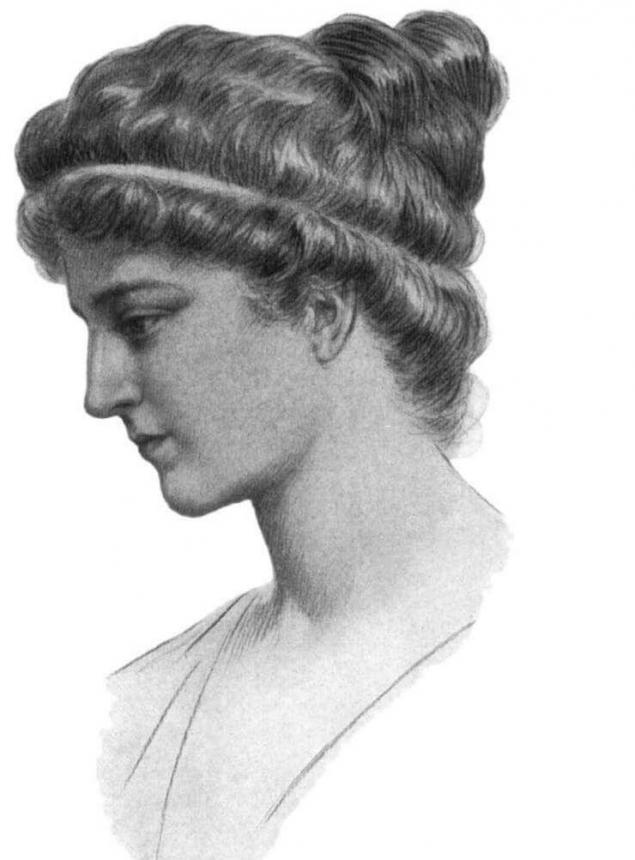
When Lord Byron's daughter was born, so I was worried that God has not given the child of poetic talent. But little Ada had inherited from her mother Annabella Milbank, nicknamed in society, "Princess of parallelograms", a gift more valuable than writing.
It was available the beauty of numbers, magic formulas and the poetry of computation. The best teachers taught Ada the exact Sciences. 17 years old beautiful and intelligent girl met Charles Babbage. Professor of the University of Cambridge was presented to the audience a model of his calculating machine. While the aristocrats stared at the mix of gears and levers, like the man in the mirror, a cute girl fell asleep Babbage issues and offered his assistance.
Absolutely fascinated, the Professor asked her to translate from Italian essays about the car, recorded by, engineer Menabrea. Hell the work was completed and added to the text of 52 pages of notes interpreter and three of the program, demonstrating the analytical capabilities of the device. So there was programming.
One program solved a system of linear equations – it is Hell introduced the concept of working cells and the ability to change its contents. Another calculated the trigonometric function for the Hell of identified cycle. The third found the Bernoulli numbers using recursion.
Here are few assumptions: operation is any process which alters the mutual relation of two or more things. The operation does not depend on the object to which it is applied. Actions can be performed not only on numbers but also on any objects that may be identified. "The essence and purpose of the machine will change from what we put into it. The machine will be able to write music, draw pictures and show science the way that we have never seen."
The design of the machine was complicated, the project was delayed for nine years, and in 1833, getting no result, the British government stopped funding... Only in a hundred years will be the first working computer, and it turns out that the programs of Ada Lovelace's work. After 50 years the planet will be occupied programmers, and each one will write his first "Hello, World!" The difference engine was built in 1991, the 200th anniversary of Babbage's birth. The name of the Countess of Lawless named the programming language ADA. On the day of her birth, December 10, programmers all over the world celebrate their professional holiday.
Marie Curie (1867-1934)
"In life there is nothing to be afraid of, only what you need to understand"
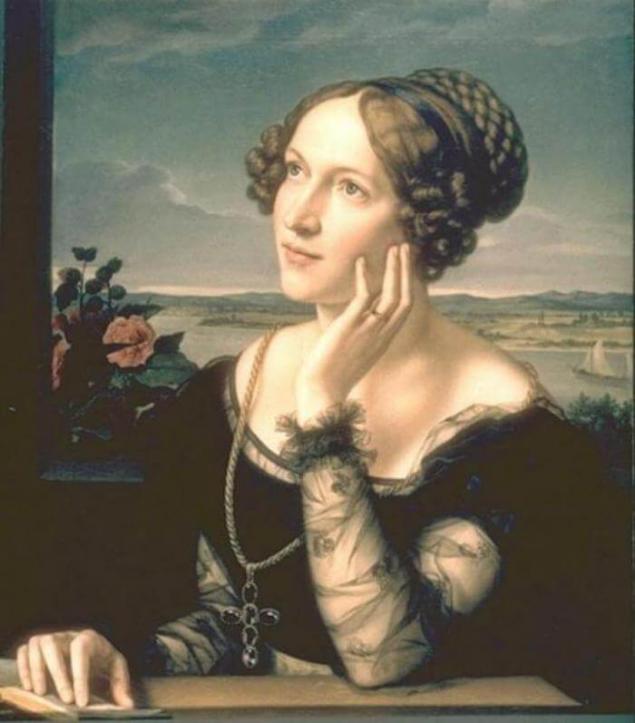
Maria Sklodowska was born in Poland, which was part of the Russian Empire. At that time women could receive higher education in Europe. To earn to study in Paris, Maria spent eight years working as a governess. At the Sorbonne she obtained two degrees (physics and mathematics), and married his colleague Pierre Curie.
Together with her husband engaged in the study of radioactivity. To select a substance with unusual properties, they are in the barn manually processed tons of uranium ore. In July 1989, the couple opened the item which Maria called polonium. In December opened the radium. After four years of hard work, Maria finally gave out decigram of substance, radiating a pale glow, and opponents called it an atomic weight of 225.
In 1903 spouses Curie and Henri Becquerel the Nobel prize in physics for the discovery of radioactivity. All 70 thousand francs left to pay debts for uranium ore and equipment of the laboratory. At that time a gram of radium cost 750 thousand francs in gold, but Curie decided that the discovery belongs to humanity, refused to patent and published their methodology. Three years later, Pierre died and Marie herself continued the research.
She was the first in France female Professor gave the students the world's first course on radioactivity. But when Marie Curie announced his candidacy in the Academy of Sciences, the scholars voted against. On the day of voting the President of the Academy told the gatekeepers: "Skip all except women"...
In 1911 Mary was isolated radium in pure metallic form, and received the Nobel prize in chemistry. Marie Curie became the first woman to twice win a Nobel prize and the only scientist who received the prize in different fields of science. Maria suggested the use of radium in medicine – for treatment of scar tissue and cancer. During the First World war created 220 portable x-ray machines (they were called "little curies").
In honor of Marie and Pierre named the chemical element curium and the unit of measurement of radioactivity – Curie. Madame Curie is always as a talisman worn around the neck a vial of the precious particles of radium. Only after her death from leukemia was revealed that radioactivity can be dangerous to humans.
Hedy Lamar (1913 – 2000)
"Any girl can be charming. All you have to do is stand still and look stupid"
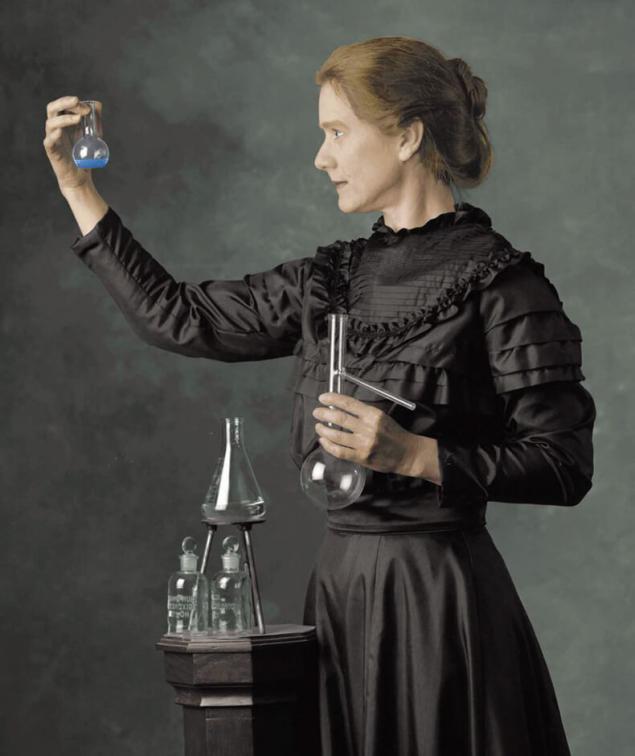
Designers may seem like a familiar face, Hedy Lamar – ten years ago, her portrait was on the screen saver Corel Draw. One of the most beautiful Actresses in Hollywood Hedwig Eva Maria kiesler was born in Austria. In his youth, the actress mischief – starred in the film with explicit sexual scene. For this, Hitler called it the shame of the Reich, the Pontiff urged Catholics not to watch the movie, and the parents quickly gave her in marriage to Fritz Mandl to suggest.
The husband was engaged in the arms business and not for a moment parted with his wife. The girl met her husband's with Hitler and Mussolini, at meetings of Industrialists, supervised the production of weapons. Ran away from her husband, feeding the servants sleeping pills and dressed in her dress, went to America. In Hollywood began a new life under a new name.
Hedy Lamar "pushed" on the big screen blondes and have great careers, earning on the set of $ 30 million. During the war, the actress became interested in radio-controlled torpedoes and addressed the national Council of inventors of the United States. Officials to get rid of beauty, gave her the bonds for sale. Hedy has announced that it will kiss everyone who buys bonds for the sum more than 25 thousand dollars. And collected 17 million.
In 1942, Hedy Lamar and composer-avant-gardist George Antejjl patented technology "frequency hopping" Secret Communication System. About this invention, it is possible to say "Music inspired". Antejjl experimented with pianelli, the bells and propellers. Observing how the composer tries to make them synchronous sound, Hedy came to the decision.
A signal with the coordinates of the target is transmitted to the torpedo at the same frequency to intercept and redirect the torpedo. But if the transmission channel to change randomly and thus the transmitter and receiver are synchronized, the data will be protected. Considering the drawings and description of the working principle, the officials joked: "You want the torpedo to put the piano?"
The invention was not implemented because of the unreliability of the mechanical components, but was useful in the era of electronics. The patent became the basis for communications with an expanded range, which today is used everywhere, from mobile phones to wifi 802.11 and GPS. Birthday actress 9 November, called inventor's day in Germany.
Barbara McClintock (1902-1992)
"For many years I loved what I was not required to defend their ideas, and could just work with great pleasure"
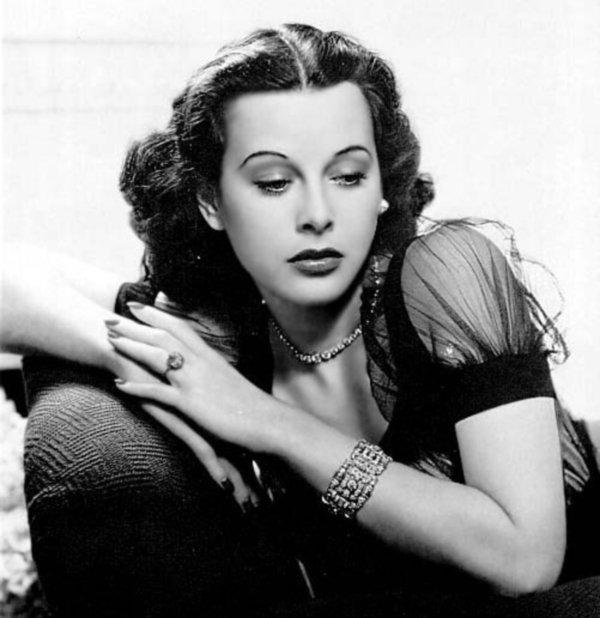
Geneticist Barbara McClintock in 1948 opened the movement of genes. Only 30 years after opening in ' 81, Barbara McClintock received the Nobel prize, becoming the third female Nobel laureate. Studying the effect of x-rays on chromosomes of maize, McClintock discovered that some genetic elements can change their position in chromosomes.
She suggested that there are mobile genes that inhibit or modify the action of neighboring genes. Colleagues responded to a report some hostile. Insights Barbara was contrary to the provisions of the chromosome theory. It was customary to assume that the stable position of the gene, and mutations are rare and random.
Barbara six years continued research and hard published results, but the scientific world ignored it. She took up teaching, taught catalogof of the South American countries. In the 1970s scientists became available methods that allowed to isolate genetic elements, and the right Barbara McClintock was proven.
Barbara McClintock developed a method for visualization of chromosomes and, using microscopic analysis, have made many fundamental discoveries in cytogenetics. She explained how there are structural changes in chromosomes. Described by ring chromosomes and telomeres were later found in humans.
The first shed light on the nature of genetic diseases, second explain the principle of cell division and biological aging. In 1931 Barbara McClintock and her student Harriet Creighton investigated the mechanism of recombination of genes during reproduction, when the parent cells exchange parts of chromosomes, giving rise to new genetic traits in offspring.
Barbara opened transposons – elements that turns the surrounding genes. She made many discoveries in cytogenetics – more than 70 years ago without the support and understanding of colleagues. According to the estimates of catalogo from 17 major discoveries in cytogenetics of maize, 30 years, ten made Barbara McClintock.
Grace Murray Hopper (1906 – 1992)
"Go and do; you will always have time to make excuses later"
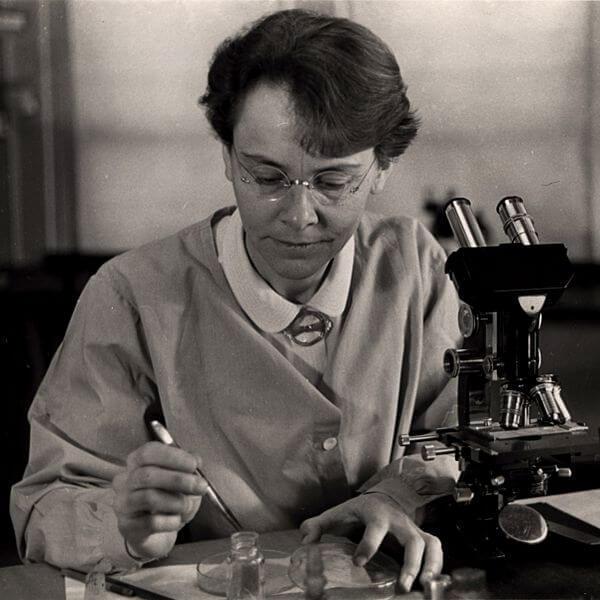
During the Second world war, the 37-year-old grace Hopper, associate Professor and mathematician, entered the service in the Navy of the United States. Attended this year in the school of warrant officer and wanted to go to the front, but grace was sent to the first in the US of a programmable computer, the mark I – translate ballistic table in binary codes. Later said by grace Hopper: "I did not understand in computers, because this was the first".
Then there was the mark II, mark III and UNIVAC I. With her light hand came into use the word bug – error and debugging – debugging. The first "bug" was a real insect in the computer flew the moth and closed relays. Grace pulled it out and pasted in a workbook. Logical paradox for programmers "As they compile the first compiler?" – it is also grace. The very first compiler (1952), the first subroutine library, assembled by hand, "because they are too lazy to remember if it did before", and COBOL, the first programming language (1962) similar to conventional language – all appeared thanks to grace Hopper.
She believed that programming should be public: "There are many people who want to solve different problems... they are the languages of another type, and not our attempts to turn them all into mathematicians." In 1969 Hopper was awarded "man of the year".
Anthroposophy: the wisdom of spiritual development of man through self-knowledge
What is "to be awake" from the point of view of neuroscience
In 1971 he established the award named after grace Hopper to programmers. (The first nominee was 33-year-old Donald Knuth, the author of multivolume monograph "the Art of computer programming".) In 77 years grace Hopper received the title of Commodore, and two years later by the decree of the President of the United States awarded her the rank of rear Admiral.
Grey Admiral Hopper retired in 80 years, five years, traveled to give lectures and presentations – smart, incredibly witty, with a bundle of "nanoseconds" in her purse. In 1992, died in his sleep on Christmas night. In her honor named the destroyer of the U.S. Navy USS Hopper, and each year the Association for computing machinery award for best young programmer award named grace Hopper.published
Author: Natalia Kalinichenko
Source: hochu.ua/cat-stars/life-lessons/article-32118-velikie-zhenschinyi-uchenyie-i-ih-otkryitiya/

Their know-how ladies appear intelligent minority who thoughtlessly enjoys coffee filters (Melitta Benz, 1909), chocolate chip cookies (Ruth Wakefield, 1930), pink champagne and Nicole Clicquot, while the stern men grind lenses for microscopes, travel through and build colliders.
On the women's account of little fundamental discoveries and scientific insights, and even in this case we have to share the laurels with men. Rosalind Elsie Franklin (1920-1957), who discovered the DNA double helix, shared the Nobel prize with three male colleagues, with no formal recognition.
Physicist Maria Mayer (1906 – 1972), all done on modeling the atomic nucleus, "treated" the Nobel prize two associates. And yet, in some cases, a woman's intuition, creativity and the ability to work hard has produced something more than a hat or a salad.
Hypatia Of Alexandria (355-415)
"To retain their right to think for even to think wrongly is better than not to think at all"

Hypatia, the daughter of the mathematician Theon of Alexandria, is the world's first female astronomer, philosopher and mathematician. According to contemporaries, surpassed in mathematics by his father, introduced the terms hyperbola, parabola and ellipse. In philosophy she was not equal. At 16, she founded the school of Neoplatonism.
He taught at the Alexandria school of philosophy of Plato and Aristotle, mathematics, dealt with the calculation of astronomical tables. It is believed that Hypatia invented or perfected distiller, a device for measuring the density of water hydrometer, the astrolabe, the planisphere and hydrostop – flat mobile sky map. The primacy of the invention of the astrolabe (instrument for astronomical measurements, which is called the computer) is disputed.
At least, Hypatia with his father modified astrolabe Claudius Ptolemy, preserved her letters with the description of the device. Hypatia is the only woman depicted in the famous fresco by Raphael "the school of Athens", surrounded by great scientists and philosophers.
The article Ari Allenby An Astronomical Murder?, published in 2010 in the journal Astronomy and Geophysics, the version of political murder of the pagan Hypatia. In those days, the Alexandrian and the Roman Church set the date of Easter according to different calendars. Easter had to fall on the first Sunday after the full moon, but not before the spring equinox.
Different dates of the celebration could cause conflict in cities with a mixed population, so it is possible that both branches of the one Church appealed the decision to the secular power. Hypatia was determined by the equinox at the time of sunrise and sunset. Not knowing about the atmospheric refraction, it might incorrectly calculate the date.
Because of these differences the Church of Alexandria had lost its primacy in determining Easter throughout the Roman Empire. Version Allenby, it could provoke a conflict between Christians and pagans. Angry citizens burned the library of Alexandria, killed the prefect Orestes, killed Hypatia and expelled the Jewish community. Later the city was left by the scientists.
Lady Augusta Ada Byron (1815-1851)
"The analytical engine does not purport to create something really new. The machine can perform all the things that we know how to order"

When Lord Byron's daughter was born, so I was worried that God has not given the child of poetic talent. But little Ada had inherited from her mother Annabella Milbank, nicknamed in society, "Princess of parallelograms", a gift more valuable than writing.
It was available the beauty of numbers, magic formulas and the poetry of computation. The best teachers taught Ada the exact Sciences. 17 years old beautiful and intelligent girl met Charles Babbage. Professor of the University of Cambridge was presented to the audience a model of his calculating machine. While the aristocrats stared at the mix of gears and levers, like the man in the mirror, a cute girl fell asleep Babbage issues and offered his assistance.
Absolutely fascinated, the Professor asked her to translate from Italian essays about the car, recorded by, engineer Menabrea. Hell the work was completed and added to the text of 52 pages of notes interpreter and three of the program, demonstrating the analytical capabilities of the device. So there was programming.
One program solved a system of linear equations – it is Hell introduced the concept of working cells and the ability to change its contents. Another calculated the trigonometric function for the Hell of identified cycle. The third found the Bernoulli numbers using recursion.
Here are few assumptions: operation is any process which alters the mutual relation of two or more things. The operation does not depend on the object to which it is applied. Actions can be performed not only on numbers but also on any objects that may be identified. "The essence and purpose of the machine will change from what we put into it. The machine will be able to write music, draw pictures and show science the way that we have never seen."
The design of the machine was complicated, the project was delayed for nine years, and in 1833, getting no result, the British government stopped funding... Only in a hundred years will be the first working computer, and it turns out that the programs of Ada Lovelace's work. After 50 years the planet will be occupied programmers, and each one will write his first "Hello, World!" The difference engine was built in 1991, the 200th anniversary of Babbage's birth. The name of the Countess of Lawless named the programming language ADA. On the day of her birth, December 10, programmers all over the world celebrate their professional holiday.
Marie Curie (1867-1934)
"In life there is nothing to be afraid of, only what you need to understand"

Maria Sklodowska was born in Poland, which was part of the Russian Empire. At that time women could receive higher education in Europe. To earn to study in Paris, Maria spent eight years working as a governess. At the Sorbonne she obtained two degrees (physics and mathematics), and married his colleague Pierre Curie.
Together with her husband engaged in the study of radioactivity. To select a substance with unusual properties, they are in the barn manually processed tons of uranium ore. In July 1989, the couple opened the item which Maria called polonium. In December opened the radium. After four years of hard work, Maria finally gave out decigram of substance, radiating a pale glow, and opponents called it an atomic weight of 225.
In 1903 spouses Curie and Henri Becquerel the Nobel prize in physics for the discovery of radioactivity. All 70 thousand francs left to pay debts for uranium ore and equipment of the laboratory. At that time a gram of radium cost 750 thousand francs in gold, but Curie decided that the discovery belongs to humanity, refused to patent and published their methodology. Three years later, Pierre died and Marie herself continued the research.
She was the first in France female Professor gave the students the world's first course on radioactivity. But when Marie Curie announced his candidacy in the Academy of Sciences, the scholars voted against. On the day of voting the President of the Academy told the gatekeepers: "Skip all except women"...
In 1911 Mary was isolated radium in pure metallic form, and received the Nobel prize in chemistry. Marie Curie became the first woman to twice win a Nobel prize and the only scientist who received the prize in different fields of science. Maria suggested the use of radium in medicine – for treatment of scar tissue and cancer. During the First World war created 220 portable x-ray machines (they were called "little curies").
In honor of Marie and Pierre named the chemical element curium and the unit of measurement of radioactivity – Curie. Madame Curie is always as a talisman worn around the neck a vial of the precious particles of radium. Only after her death from leukemia was revealed that radioactivity can be dangerous to humans.
Hedy Lamar (1913 – 2000)
"Any girl can be charming. All you have to do is stand still and look stupid"

Designers may seem like a familiar face, Hedy Lamar – ten years ago, her portrait was on the screen saver Corel Draw. One of the most beautiful Actresses in Hollywood Hedwig Eva Maria kiesler was born in Austria. In his youth, the actress mischief – starred in the film with explicit sexual scene. For this, Hitler called it the shame of the Reich, the Pontiff urged Catholics not to watch the movie, and the parents quickly gave her in marriage to Fritz Mandl to suggest.
The husband was engaged in the arms business and not for a moment parted with his wife. The girl met her husband's with Hitler and Mussolini, at meetings of Industrialists, supervised the production of weapons. Ran away from her husband, feeding the servants sleeping pills and dressed in her dress, went to America. In Hollywood began a new life under a new name.
Hedy Lamar "pushed" on the big screen blondes and have great careers, earning on the set of $ 30 million. During the war, the actress became interested in radio-controlled torpedoes and addressed the national Council of inventors of the United States. Officials to get rid of beauty, gave her the bonds for sale. Hedy has announced that it will kiss everyone who buys bonds for the sum more than 25 thousand dollars. And collected 17 million.
In 1942, Hedy Lamar and composer-avant-gardist George Antejjl patented technology "frequency hopping" Secret Communication System. About this invention, it is possible to say "Music inspired". Antejjl experimented with pianelli, the bells and propellers. Observing how the composer tries to make them synchronous sound, Hedy came to the decision.
A signal with the coordinates of the target is transmitted to the torpedo at the same frequency to intercept and redirect the torpedo. But if the transmission channel to change randomly and thus the transmitter and receiver are synchronized, the data will be protected. Considering the drawings and description of the working principle, the officials joked: "You want the torpedo to put the piano?"
The invention was not implemented because of the unreliability of the mechanical components, but was useful in the era of electronics. The patent became the basis for communications with an expanded range, which today is used everywhere, from mobile phones to wifi 802.11 and GPS. Birthday actress 9 November, called inventor's day in Germany.
Barbara McClintock (1902-1992)
"For many years I loved what I was not required to defend their ideas, and could just work with great pleasure"

Geneticist Barbara McClintock in 1948 opened the movement of genes. Only 30 years after opening in ' 81, Barbara McClintock received the Nobel prize, becoming the third female Nobel laureate. Studying the effect of x-rays on chromosomes of maize, McClintock discovered that some genetic elements can change their position in chromosomes.
She suggested that there are mobile genes that inhibit or modify the action of neighboring genes. Colleagues responded to a report some hostile. Insights Barbara was contrary to the provisions of the chromosome theory. It was customary to assume that the stable position of the gene, and mutations are rare and random.
Barbara six years continued research and hard published results, but the scientific world ignored it. She took up teaching, taught catalogof of the South American countries. In the 1970s scientists became available methods that allowed to isolate genetic elements, and the right Barbara McClintock was proven.
Barbara McClintock developed a method for visualization of chromosomes and, using microscopic analysis, have made many fundamental discoveries in cytogenetics. She explained how there are structural changes in chromosomes. Described by ring chromosomes and telomeres were later found in humans.
The first shed light on the nature of genetic diseases, second explain the principle of cell division and biological aging. In 1931 Barbara McClintock and her student Harriet Creighton investigated the mechanism of recombination of genes during reproduction, when the parent cells exchange parts of chromosomes, giving rise to new genetic traits in offspring.
Barbara opened transposons – elements that turns the surrounding genes. She made many discoveries in cytogenetics – more than 70 years ago without the support and understanding of colleagues. According to the estimates of catalogo from 17 major discoveries in cytogenetics of maize, 30 years, ten made Barbara McClintock.
Grace Murray Hopper (1906 – 1992)
"Go and do; you will always have time to make excuses later"

During the Second world war, the 37-year-old grace Hopper, associate Professor and mathematician, entered the service in the Navy of the United States. Attended this year in the school of warrant officer and wanted to go to the front, but grace was sent to the first in the US of a programmable computer, the mark I – translate ballistic table in binary codes. Later said by grace Hopper: "I did not understand in computers, because this was the first".
Then there was the mark II, mark III and UNIVAC I. With her light hand came into use the word bug – error and debugging – debugging. The first "bug" was a real insect in the computer flew the moth and closed relays. Grace pulled it out and pasted in a workbook. Logical paradox for programmers "As they compile the first compiler?" – it is also grace. The very first compiler (1952), the first subroutine library, assembled by hand, "because they are too lazy to remember if it did before", and COBOL, the first programming language (1962) similar to conventional language – all appeared thanks to grace Hopper.
She believed that programming should be public: "There are many people who want to solve different problems... they are the languages of another type, and not our attempts to turn them all into mathematicians." In 1969 Hopper was awarded "man of the year".
Anthroposophy: the wisdom of spiritual development of man through self-knowledge
What is "to be awake" from the point of view of neuroscience
In 1971 he established the award named after grace Hopper to programmers. (The first nominee was 33-year-old Donald Knuth, the author of multivolume monograph "the Art of computer programming".) In 77 years grace Hopper received the title of Commodore, and two years later by the decree of the President of the United States awarded her the rank of rear Admiral.
Grey Admiral Hopper retired in 80 years, five years, traveled to give lectures and presentations – smart, incredibly witty, with a bundle of "nanoseconds" in her purse. In 1992, died in his sleep on Christmas night. In her honor named the destroyer of the U.S. Navy USS Hopper, and each year the Association for computing machinery award for best young programmer award named grace Hopper.published
Author: Natalia Kalinichenko
Source: hochu.ua/cat-stars/life-lessons/article-32118-velikie-zhenschinyi-uchenyie-i-ih-otkryitiya/
We fight always, even when I would like to agree to, and accept
Small Christmas trees for small interiors





